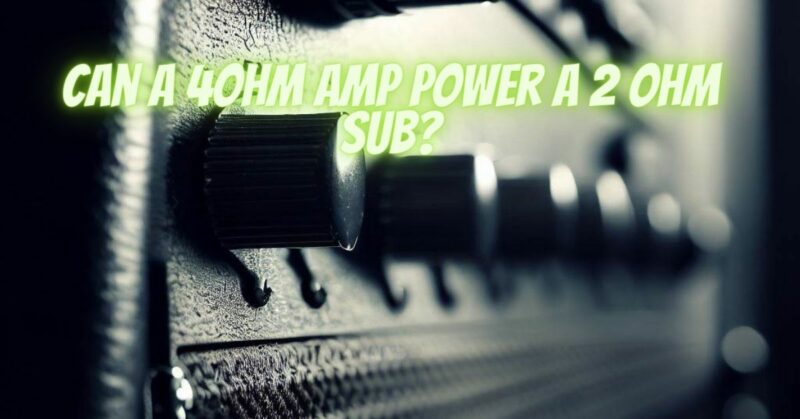The world of car audio can be both exciting and complex, and one common question that arises is whether a 4-ohm amplifier can effectively drive a 2-ohm subwoofer. Understanding the relationship between amplifier and subwoofer impedance is crucial for achieving optimal performance and preventing potential damage to your equipment. In this article, we will explore the implications of connecting a 4-ohm amplifier to a 2-ohm subwoofer and provide guidance on what you should consider.
Understanding Impedance Matching
Impedance, measured in ohms (Ω), represents the electrical resistance a component presents to the flow of current. In car audio systems, both amplifiers and subwoofers have impedance ratings. To achieve the best performance, it’s generally recommended to match the impedance of your amplifier and subwoofer closely. However, there are scenarios where connecting components with different impedance ratings can be done safely.
Advantages of Matching Impedance:
- Minimizes the risk of overheating and amplifier damage.
- Ensures optimal power transfer from the amplifier to the subwoofer.
- Helps maintain consistent sound quality and performance.
Can a 4-Ohm Amplifier Drive a 2-Ohm Subwoofer?
Technically, you can connect a 4-ohm amplifier to a 2-ohm subwoofer, but there are important considerations to keep in mind:
- Power Output: When connecting a lower-impedance subwoofer (in this case, 2 ohms) to a higher-impedance amplifier (4 ohms), you are effectively drawing more power from the amplifier than it was designed for. This can result in an increase in power output and, potentially, greater bass performance. However, it also means the amplifier is working harder, which can lead to overheating and reduced amplifier lifespan.
- Heat and Overheating: Amplifiers are designed to handle specific impedance loads, and exceeding these limits can cause the amplifier to overheat. This can result in reduced performance and even permanent damage.
- Warranty Implications: Operating your amplifier outside its specified impedance range may void the warranty, leaving you responsible for any repair or replacement costs.
- Safety: Pushing an amplifier beyond its intended limits can pose safety risks, including fire hazards or electrical damage.
Precautions and Considerations:
If you decide to connect a 4-ohm amplifier to a 2-ohm subwoofer, consider the following precautions:
- Check Amplifier Specifications: Review your amplifier’s user manual and specifications to see if it can handle lower impedance loads safely. Some amplifiers have a 2-ohm stability mode, while others do not.
- Monitor Heat: Pay close attention to the amplifier’s temperature during use. If it starts to feel excessively hot, turn it off immediately to prevent overheating.
- Use Quality Wiring: Ensure you use high-quality, low-resistance wiring to minimize the risk of power loss and overheating.
- Volume Control: Be mindful of the volume levels you use. Lower volumes are less likely to strain your amplifier.
- Consider an Impedance-Matching Solution: If you’re concerned about impedance matching, consider using a dual voice coil subwoofer with a 4-ohm or 8-ohm dual voice coil. This allows for more flexible wiring options to better match your amplifier’s impedance.
While it is technically possible to connect a 4-ohm amplifier to a 2-ohm subwoofer, it comes with inherent risks, including overheating and potential damage to your equipment. To ensure safety and optimal performance, it’s advisable to match the impedance ratings of your amplifier and subwoofer as closely as possible. Always consult your amplifier’s manual and consider the potential consequences before attempting to connect components with differing impedance values.


